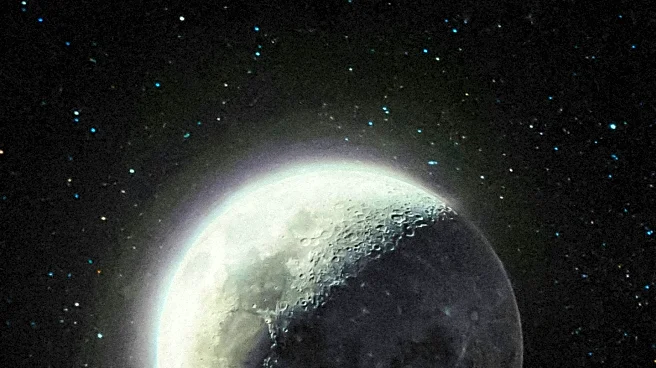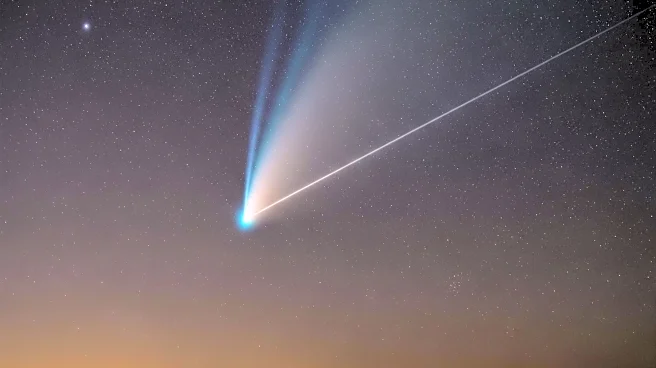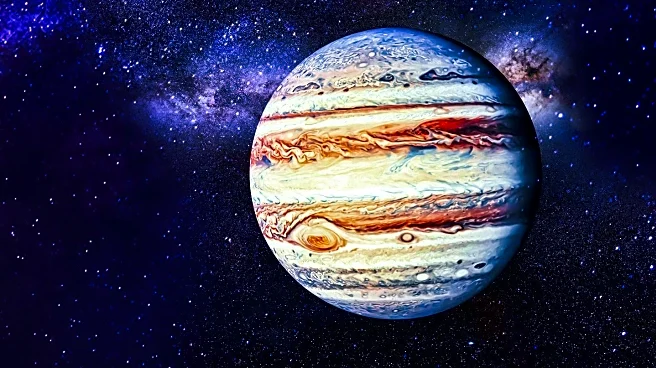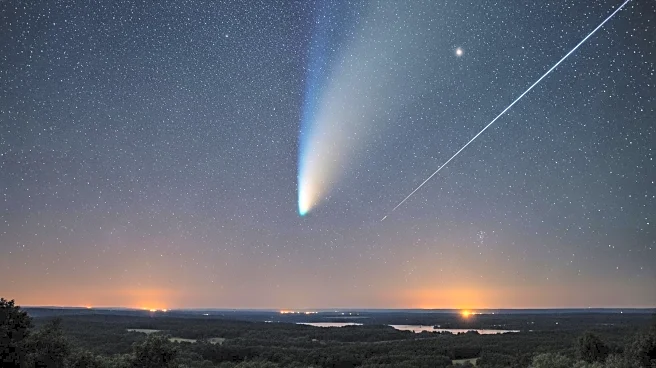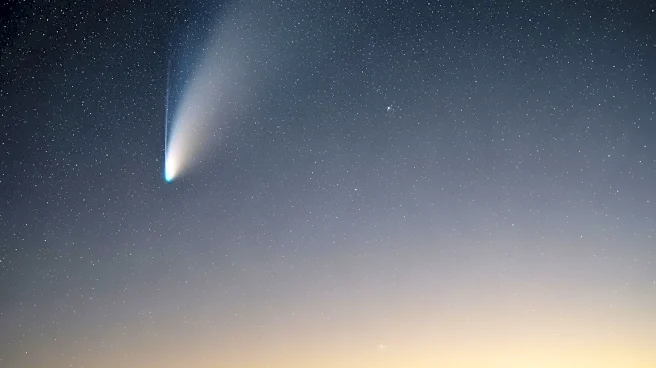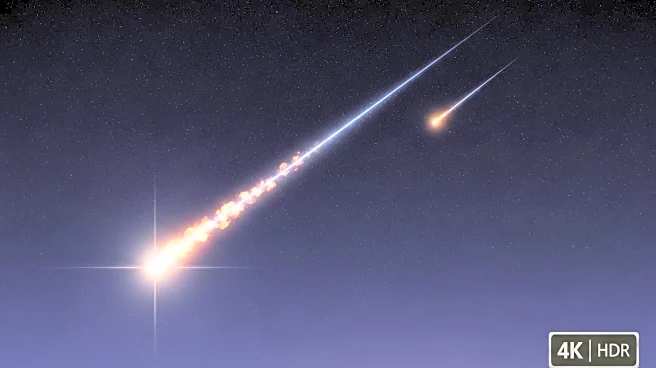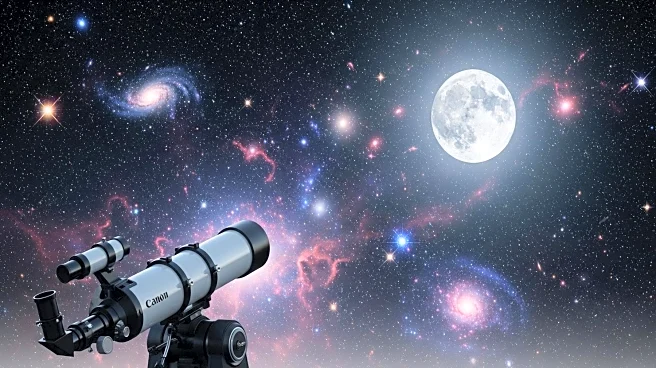What's Happening?
On October 16, 2025, a celestial event will occur as the crescent Moon aligns closely with Regulus, the brightest star in the constellation Leo. This conjunction will be visible in the early morning sky,
offering a unique opportunity for stargazers to observe the Moon nestled near the Sickle asterism, which outlines Leo's head. Regulus, a quadruple-star system, shines significantly brighter than the Sun and is a key component of the Sickle. Observers can expect the Moon to pass 1.2 degrees north of Regulus at 2 P.M. EDT, with its position shifting by the following morning.
Why It's Important?
This astronomical event is significant for enthusiasts and researchers as it provides a chance to observe the dynamics of celestial bodies in motion. The proximity of the Moon to Regulus allows for educational opportunities in understanding star systems and their brightness compared to our Sun. Such events can inspire interest in astronomy and science, potentially influencing educational programs and public interest in space exploration.
What's Next?
Stargazers and astronomers will continue to monitor the movement of celestial bodies, with future events offering similar opportunities for observation. The ongoing study of star systems like Regulus contributes to our understanding of the universe, potentially leading to new discoveries in astrophysics.
Beyond the Headlines
The event highlights the cultural and scientific importance of astronomy, encouraging public engagement with the night sky. It underscores the role of celestial events in fostering curiosity and learning, which can have long-term impacts on science education and public interest in space.
